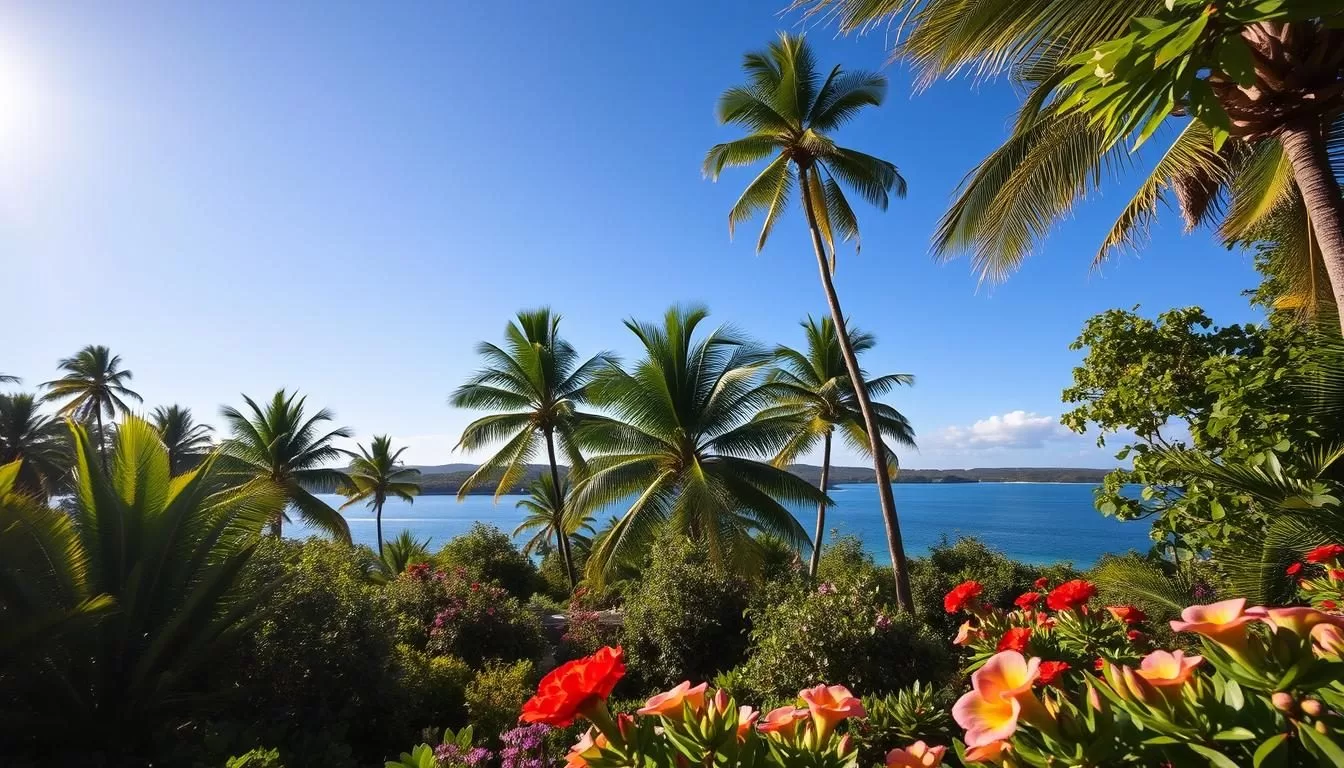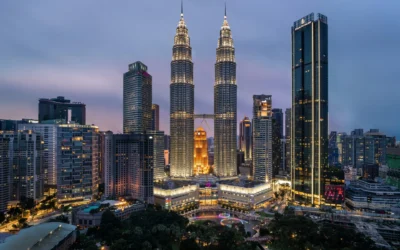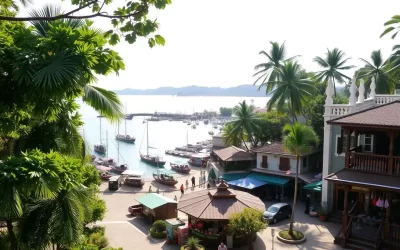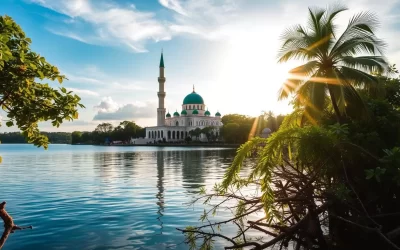Planning a trip to Malaysia can be a daunting task, especially when considering the country’s diverse weather patterns. The country’s unique geography creates distinct seasonal variations across different regions.
Understanding the weather and season is crucial to making the most of your trip. The dry season months, typically from December to February, are ideal for visiting the islands on the west side of Malaysia, such as Penang and Langkawi.
On the other hand, if you’re planning to visit Perhentian and Tioman Island on the Eastern coast, the best time to visit is between May and September. This time frame allows you to avoid the harsh rainfall and enjoy your trip.
Understanding Malaysia’s Tropical Climate
Malaysia’s geography plays a significant role in shaping its tropical climate, leading to distinct weather conditions in different areas. The country’s climate is influenced by its location near the equator and its diverse topography, ranging from coastal plains to mountainous regions.
The varied geography results in different weather patterns across the country, making some regions more suitable for certain activities during specific times of the year. Understanding these variations is crucial for planning a weather-savvy trip to Malaysia.
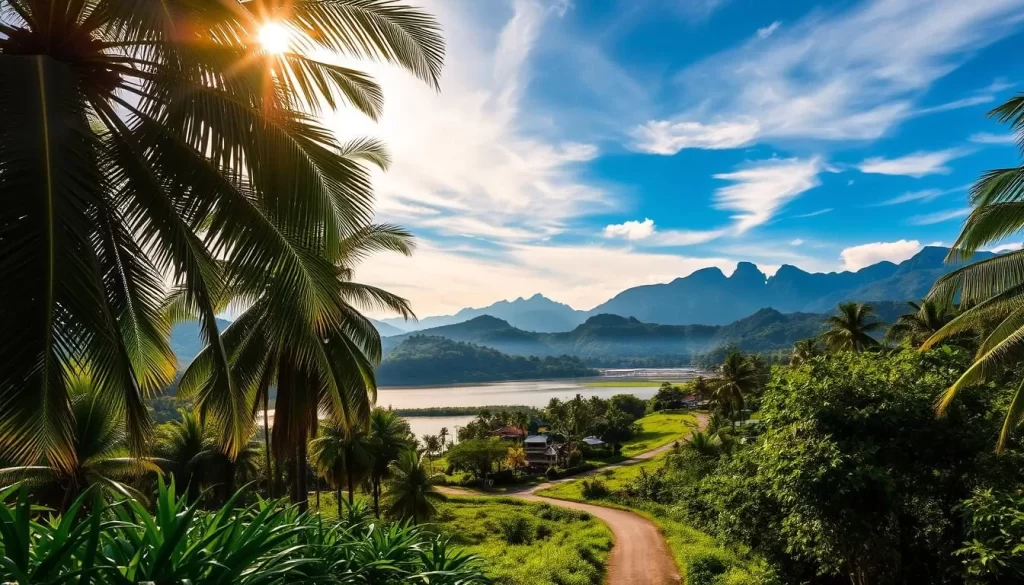
The Two Monsoon Seasons
Malaysia experiences two monsoon seasons: the Northeast Monsoon and the Southwest Monsoon. The Northeast Monsoon typically occurs from November to March, bringing heavy rainfall to the east coast of Peninsular Malaysia and East Malaysia. In contrast, the Southwest Monsoon from May to September affects the west coast, causing dry conditions in some areas and rain in others.
- The Northeast Monsoon has a significant impact on the east coast, causing increased rainfall and rough seas.
- The Southwest Monsoon leads to drier conditions on the west coast but can still result in occasional rain showers.
Regional Weather Variations
Regional weather variations in Malaysia are significant due to its geography. East Malaysia, which includes Sabah and Sarawak on the island of Borneo, has different weather patterns compared to Peninsular Malaysia. Even within Peninsular Malaysia, there are variations between the east and west coasts, with the east coast experiencing more rain during the Northeast Monsoon season and the west coast being drier during the same period.
The elevation also plays a crucial role, with highland areas like the Cameron Highlands having a cooler climate compared to the hot and humid conditions in coastal areas. This diversity in climate and weather conditions across different regions and elevations allows visitors to find suitable destinations based on their preferences and the time of year they plan to visit.
Malaysia: Best Months for a Weather-Savvy Trip Overview
When planning your trip to Malaysia, timing is everything, and understanding the best time to visit can make all the difference. The country’s diverse climate means that different regions are ideal for visiting at different times of the year.
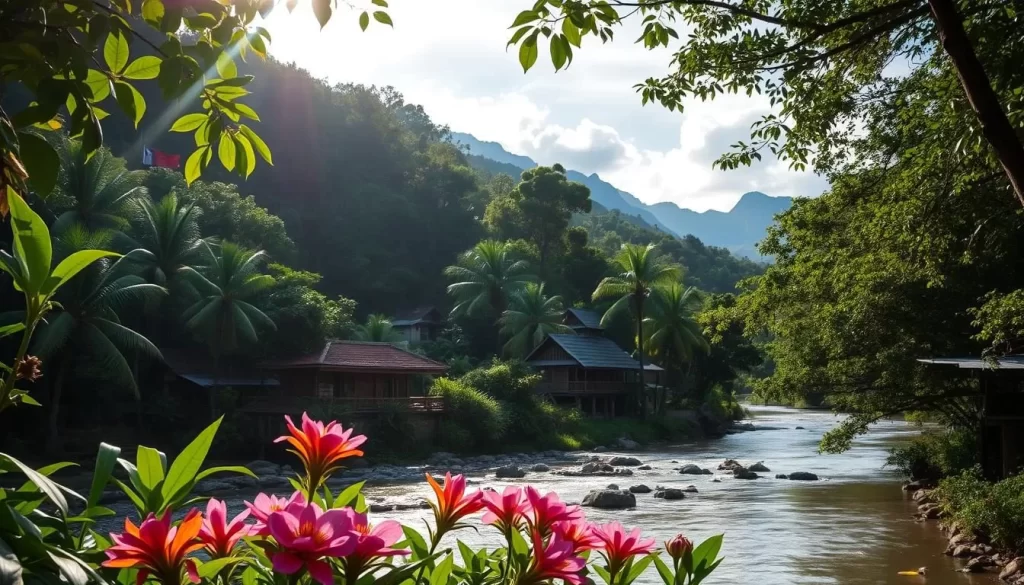
The west coast and east coast of Malaysia have distinct weather patterns due to the monsoon seasons. Understanding these patterns can help you plan your trip accordingly.
December to February: Ideal for West Coast
The months from December to February are considered ideal for visiting the west coast of Malaysia. During this period, the weather is generally dry and sunny, making it perfect for enjoying the beautiful beach destinations like Langkawi and Penang. You can enjoy water activities, explore the local culture, and take in the vibrant atmosphere without the hindrance of rain.
May to September: Perfect for East Coast
For the east coast, the best time to visit is from May to September. This period coincides with the dry season on the east coast, offering sunny days that are ideal for island-hopping and enjoying the pristine beaches of destinations like the Perhentian Islands, Redang, and Tioman. It’s worth noting that this is peak tourist season, so it’s advisable to book your accommodations in advance to avoid higher prices and availability issues.
Weather in Peninsular Malaysia vs. Borneo
Peninsular Malaysia and Borneo experience different weather patterns due to their geographical locations. The weather on the East Coast of Peninsular Malaysia is particularly noteworthy.
The East Coast of Peninsular Malaysia faces a wet season during the Northeast Monsoon from November to March. During this period, many east coast resorts and businesses close due to heavy rain and rough sea conditions.
West Coast Weather Patterns
The West Coast has a different seasonal pattern, with less rain compared to the East Coast during the Northeast Monsoon.
East Coast Weather Patterns
On the east coast, the wet season brings significant rainfall during certain months. The Southwest Monsoon (May-September) creates ideal conditions for visiting east coast destinations.
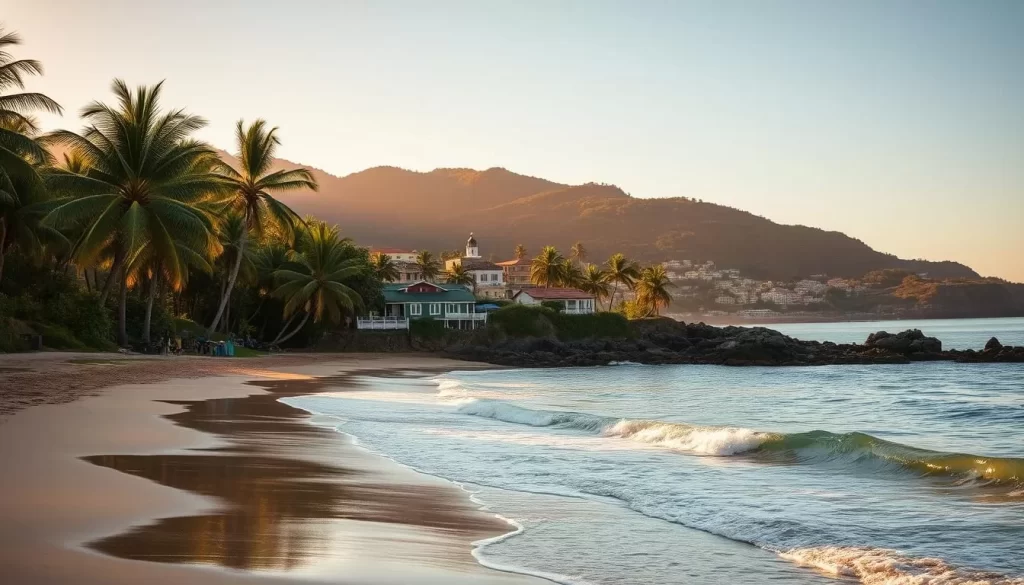
Kuala Lumpur: When to Visit the Capital
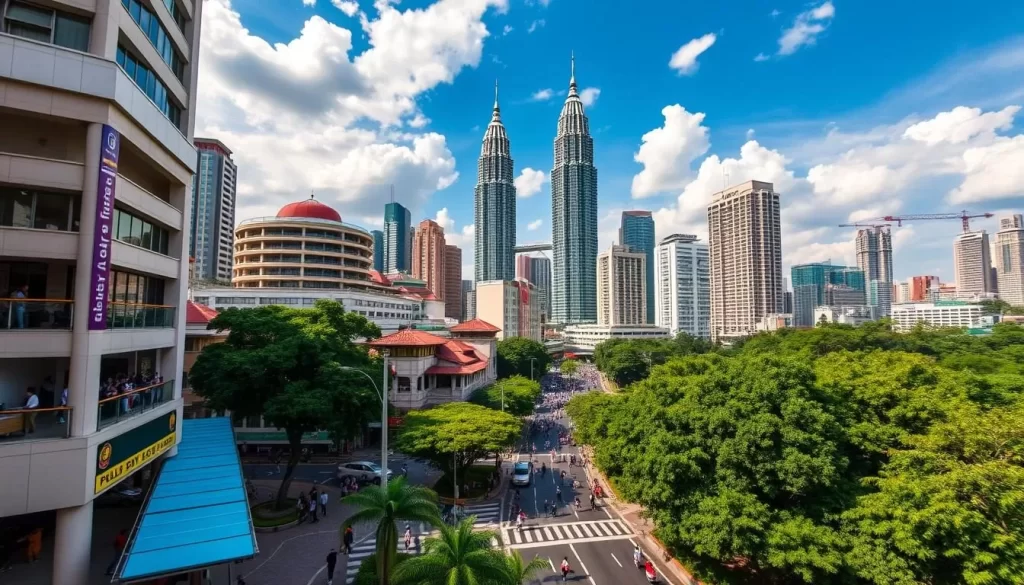
Kuala Lumpur’s weather is characterized by its tropical monsoon climate, making some months more suitable for visiting than others. Understanding the city’s climate is crucial for planning a trip that meets your expectations.
Driest Months: June to August
The months from June to August are considered the driest in Kuala Lumpur, making them ideal for outdoor activities and sightseeing. With less rainfall during this period, you can enjoy the city’s attractions without the hindrance of wet weather.
Rainiest Months: April, October, and November
The rainiest months in Kuala Lumpur are April, October, and November, characterized by heavy rains and frequent downpours. These months coincide with the transitional periods between monsoon seasons, leading to unstable weather patterns. While this might impact outdoor activities, it’s also a period when you can find better hotel rates and fewer tourists.
Beach Destinations Weather Guide
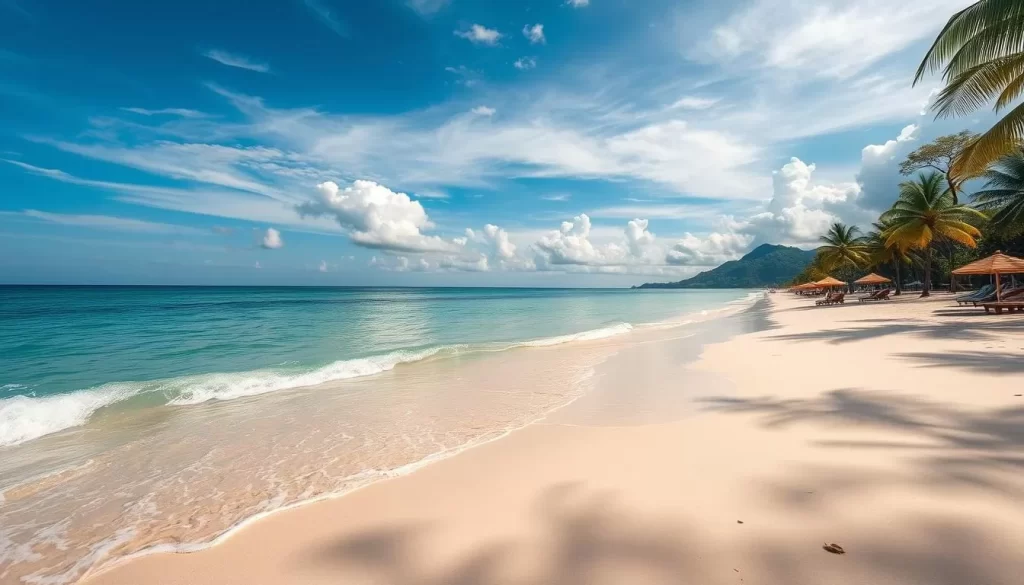
To enjoy Malaysia’s beach destinations to the fullest, it’s essential to know the best time to visit based on the weather. The country’s diverse weather patterns affect its beaches in various ways.
Langkawi and Penang (West Coast)
Langkawi and Penang, located on the West Coast, experience their best weather from December to February. During this period, the weather is generally dry and sunny, making it ideal for beach activities.
Perhentian and Tioman Islands (East Coast)
The Perhentian and Tioman Islands, on the East Coast, have their best weather from May to September. This period is characterized by calm seas and clear skies, perfect for snorkeling and diving.
Dealing with Jellyfish Seasons
Jellyfish are a nuisance in Malaysian waters, particularly between May and October. To minimize encounters, swim in designated safe areas and wear protective clothing. If stung, use vinegar to neutralize the venom.
Cameron Highlands: A Year-Round Destination
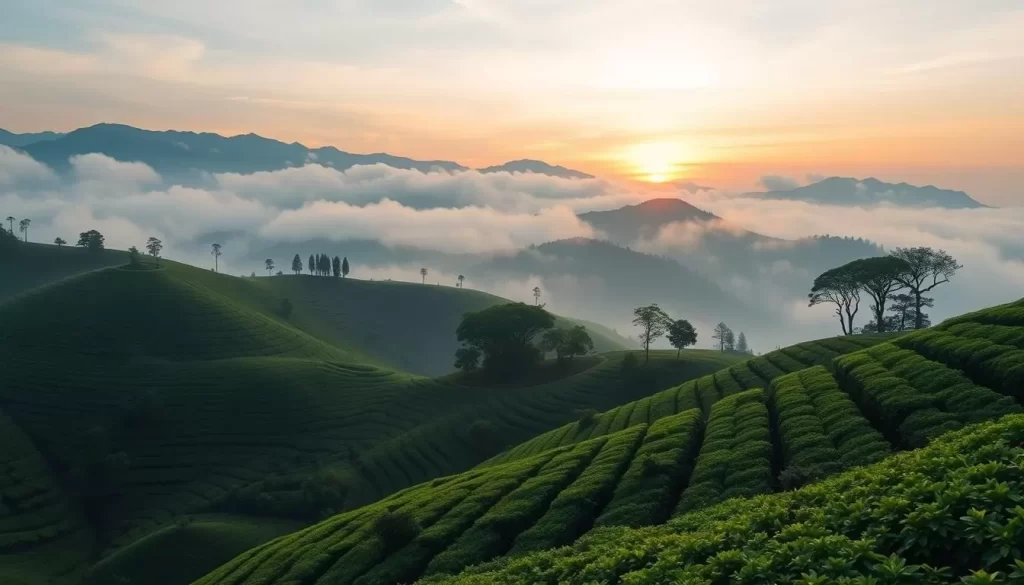
Nested in the heart of Malaysia, the Cameron Highlands offers a unique blend of cool climate and lush landscapes.
Cooler Climate and Tea Plantations
The Cameron Highlands is known for its cooler climate, making it an ideal retreat from the Malaysian heat. The region is also famous for its tea plantations, where you can visit and learn about the tea production process.
Best Months for Hiking and Outdoor Activities
For outdoor enthusiasts, the best time to visit the Cameron Highlands for hiking and other activities is from February to April. During this period, the weather is generally dry, with less rainfall and clearer trails, making it perfect for exploring the area’s natural beauty.
Here are some key points to consider when planning your trip to the Cameron Highlands:
- You’ll discover that February to April generally offers the best weather for hiking and outdoor activities, with less rainfall and clearer trails.
- The region’s rainfall patterns differ from coastal areas, with precipitation possible throughout the year but typically less intense.
- You can explore popular hiking trails, where weather conditions affect their accessibility and difficulty.
- The area offers seasonal outdoor activities, from strawberry picking to visiting butterfly gardens, and the best times for each.
- You’ll need to prepare for the highlands’ changeable weather with appropriate clothing and gear.
Visiting Malaysian Borneo

The diverse landscapes of Malaysian Borneo, from the beaches to the mountains, are influenced by the weather, making some times better for visiting than others.
Malaysian Borneo is divided into two states: Sarawak and Sabah. Each has its unique weather patterns.
Sarawak Weather Patterns
Sarawak’s climate is generally tropical, with high temperatures and humidity throughout the year. Understanding the seasonal variations can help you plan your trip.
Sabah and Mount Kinabalu
The weather in Sabah is generally most favorable from March to October, with April to June often considered the best months for climbing Mount Kinabalu due to clearer conditions. You’ll discover that April to June typically offers the best weather conditions for climbing Mount Kinabalu, with clearer skies and less rainfall.
You’ll learn about the temperature variations at different elevations on Mount Kinabalu, from the tropical base to the chilly summit.
Seasonal Breakdown: Month-by-Month Guide
As you plan your trip to Malaysia, understanding the seasonal weather breakdown is key to a successful journey. Malaysia’s climate is influenced by two monsoon seasons, which bring distinct weather patterns throughout the year. Understanding these patterns will help you choose the best time to visit different parts of the country.
January to March: Post-Monsoon Period
During the post-monsoon period, the weather in Malaysia starts to stabilize. January and February are generally dry on the west coast, making them ideal for visiting destinations like Kuala Lumpur and Penang. In contrast, the east coast experiences some residual rainfall from the northeast monsoon. March marks the beginning of a transitional period, with temperatures rising across the country.
April to June: Transitional Period
The transitional period is characterized by rising temperatures and humidity. April is still relatively dry, but the heat starts to build up. May and June see the onset of the southwest monsoon, which brings rain to some parts of the country, particularly in the afternoons. This period is a good time to visit the highlands, such as the Cameron Highlands, where the climate is cooler.
July to September: Southwest Monsoon
The southwest monsoon brings dry weather to most parts of Malaysia, except for some areas in the northwest. July to September is a great time to visit the east coast, as the weather is generally dry and sunny. However, the afternoons can be hot, so it’s essential to plan your activities accordingly.
October to December: Northeast Monsoon
The northeast monsoon starts to set in during October, bringing heavy rainfall to the east coast of Peninsular Malaysia. November is one of the wettest months, with significant rainfall. However, the west coast remains relatively dry during this period, making it a good time to visit destinations like Langkawi and Penang. The festive season, including Deepavali and Christmas/New Year celebrations, adds to the vibrancy of your visit.
| Period | Weather Pattern | Best Destinations |
|---|---|---|
| January to March | Post-monsoon, dry on west coast | Kuala Lumpur, Penang |
| April to June | Transitional, rising temperatures | Cameron Highlands |
| July to September | Southwest monsoon, dry on east coast | Perhentian Islands, Tioman Island |
| October to December | Northeast monsoon, wet on east coast | Langkawi, Penang |
Cultural Festivals and Weather Considerations
Malaysia celebrates numerous cultural festivals throughout the year, each with its unique charm. These festivals are not only a reflection of the country’s rich cultural heritage but also an integral part of the tourist experience.
Chinese New Year
Chinese New Year, celebrated in January or February, is a significant event with parades and festivities in major cities. It’s a great time to experience Malaysian culture, but be prepared for potential rainfall during this period.
Hari Merdeka
Hari Merdeka, on August 31, marks Malaysia’s independence. The celebrations include patriotic events and ceremonies. The weather is usually dry during this period, making it ideal for outdoor activities.
Deepavali and Year-End Celebrations
Deepavali, in October or November, is celebrated with oil lamps and rangoli designs. The year-end celebrations, including Christmas and New Year, bring festive atmospheres to cities like George Town and Kuala Lumpur, coinciding with the peak tourist season on the west coast.
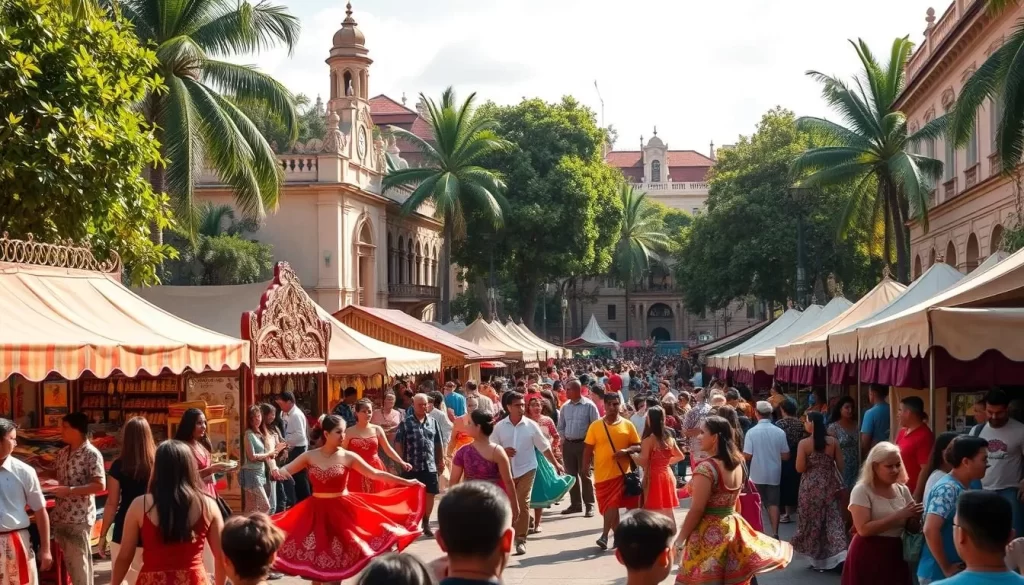
Traveling During Ramadan in Malaysia
Traveling to Malaysia during Ramadan can be a unique cultural experience, but it requires some preparation. You should show proper respect to people who may be fasting throughout the day.
During this period, some tourist activities may be affected, and being aware of these changes can help you plan your trip more effectively.
Impact on Tourist Activities
Some businesses and attractions may have adjusted hours or closures during Ramadan. You should check the opening hours in advance to avoid disappointment. Additionally, some public events and festivals may be more subdued during this period.
Respectful Practices for Visitors
To ensure a respectful visit, avoid eating, drinking, or smoking in public during daylight hours. Dressing modestly is also appreciated, especially when visiting Muslim-majority areas. Be patient and considerate, as those fasting may have less energy during the day. If invited to join an iftar (breaking of the fast), it can be a meaningful cultural experience.
- Be mindful of the local customs and traditions.
- Show respect by dressing modestly and avoiding public displays of consumption.
- Participate respectfully in iftar if invited.
Weather-Smart Packing Tips for Malaysia
To make the most of your Malaysian adventure, understanding how to pack for its weather is key. Malaysia’s tropical climate means that the temperature remains relatively high throughout the year, with significant rainfall during certain seasons. Being prepared is essential to enjoying your trip without the weather becoming a hindrance.
Preparing for the Rainy Season
Malaysia experiences significant rainfall during its monsoon season, making it vital to include items in your luggage that will keep you dry. Essential items include waterproof jackets, umbrellas, and waterproof bags to protect your belongings. Additionally, packing quick-drying clothes can be a lifesaver during unexpected rain showers.
Beating the Heat and Humidity
Don’t expect a break from the heat or humidity either—temperatures in Kuala Lumpur during the summer months are typically in the 90s, with humidity to match. To stay comfortable, you’ll want to pack lightweight, breathable fabrics like cotton and linen. Moisture-wicking clothing is also valuable for outdoor activities, helping to keep you dry and comfortable.
Other essentials for managing Malaysia’s heat include high-SPF sunscreen, sunglasses, and a wide-brimmed hat for sun protection. Portable fans, cooling towels, and reusable water bottles can also enhance your comfort during hot days. When visiting religious sites, modest yet cool clothing options are ideal, allowing you to be respectful while remaining comfortable in the heat.
Conclusion: Planning Your Weather-Perfect Malaysian Adventure
Armed with knowledge of Malaysia’s complex weather, you can now tailor your trip to suit your preferences. The best time to visit varies by region: December to February is ideal for the west coast, while May to September is perfect for the east coast.
You now understand that there’s no single “best” time for all of Malaysia, but rather optimal windows for specific experiences. With this weather-savvy knowledge, you’ll feel confident planning your Malaysian adventure, maximizing your enjoyment of this diverse and beautiful country.
The above is subject to change.
Check back often to TRAVEL.COM for the latest travel tips and deals.
Here are some Tours & Sightseeing suggestions that might pique your interests!
